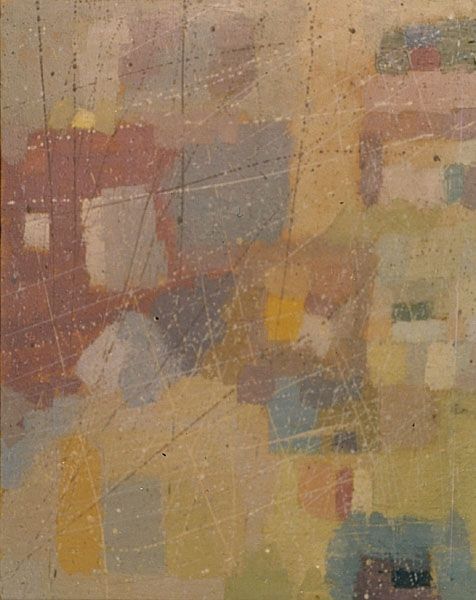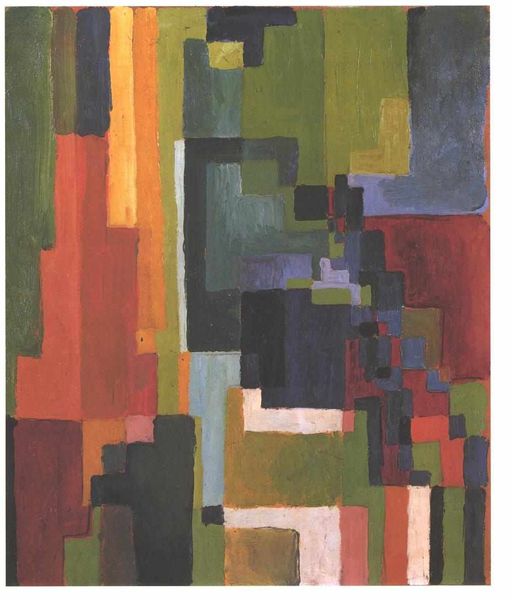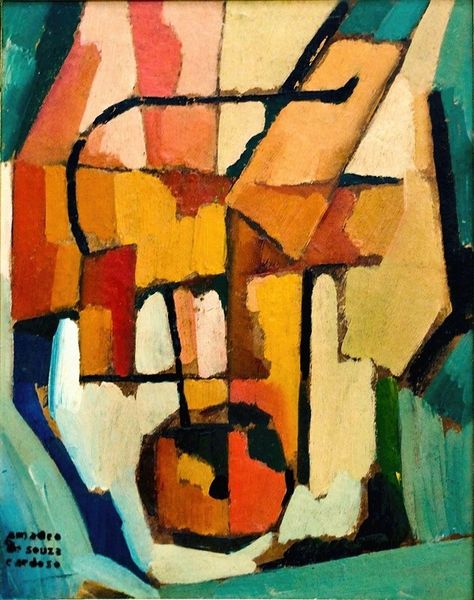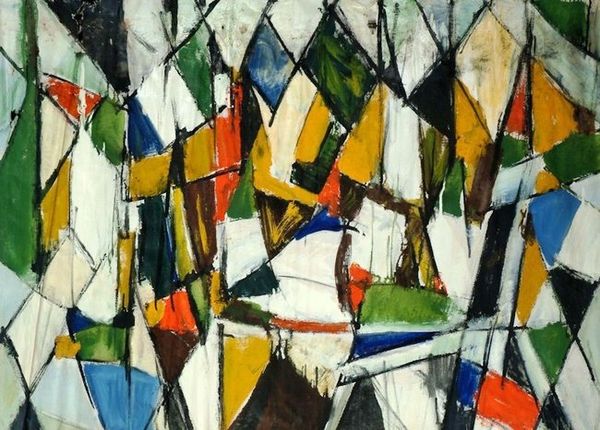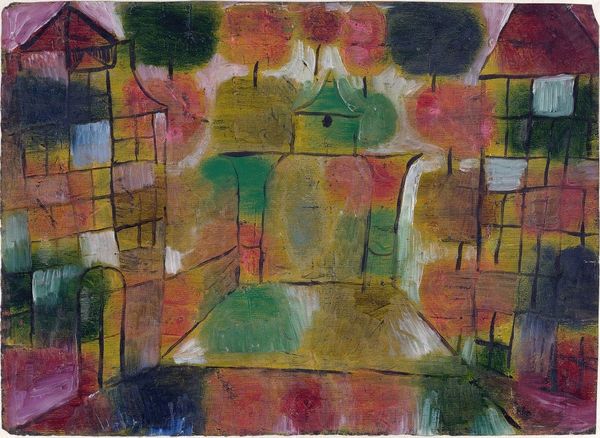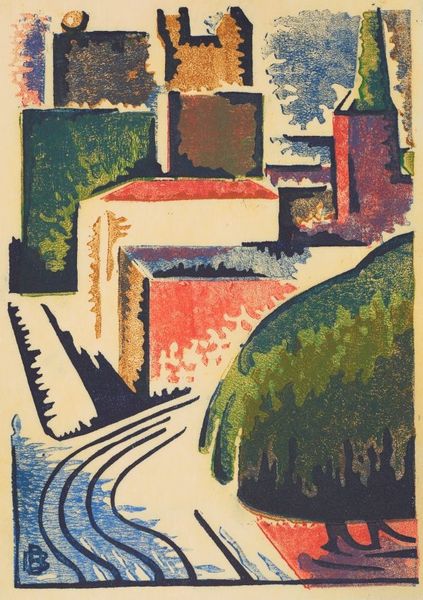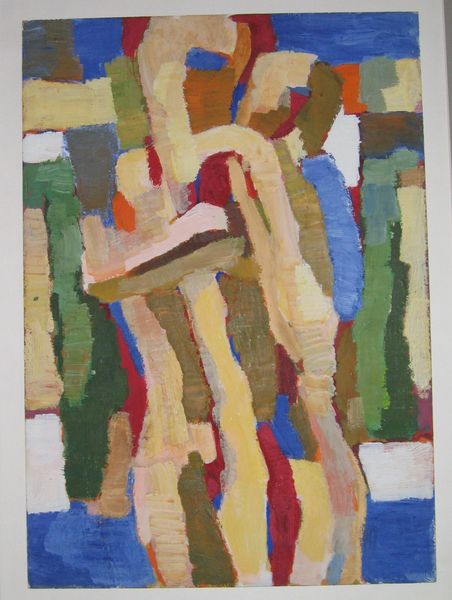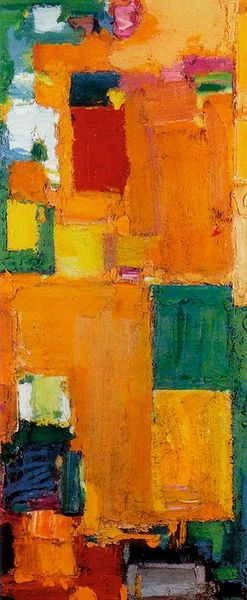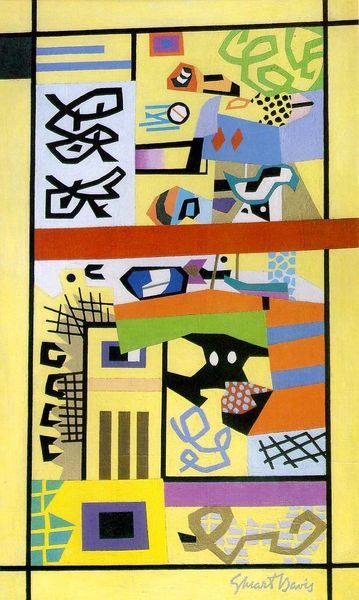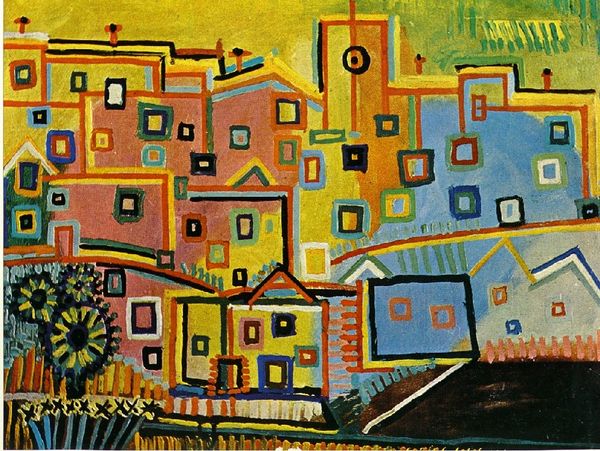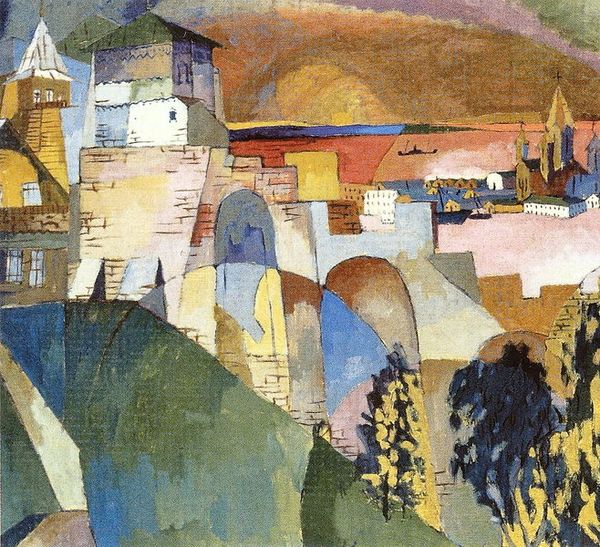
painting, oil-paint
#
cubism
#
painting
#
oil-paint
#
landscape
#
oil painting
#
geometric
#
line
#
modernism
Copyright: Public domain
Curator: We're looking at "Basque Landscape," painted in 1914 by Amadeo de Souza-Cardoso, a piece rendered in oil on canvas. Editor: The painting strikes me as a study in contrasts. It has this chaotic yet calming feeling, likely due to the dynamic color combinations, offset by the grid-like pattern of lines. It almost feels like stained glass, in a strange, deconstructed way. Curator: Indeed. Souza-Cardoso clearly experimented with cubist principles, fragmenting the scene and rearranging it into near geometric shapes. Observe how lines and planes interlock, rejecting traditional perspective in favor of a more subjective spatial representation. Editor: You can certainly see the traces of Cubism, although his color palette feels uniquely bold compared to what Picasso and Braque were doing at the time. Was he exploring the rising nationalist sentiments with these very location-specific works? Curator: Interesting consideration. He painted it while based in the milieu of Parisian avant-garde circles, meaning it most probably served his investigation into representing reality, as well as emotion, via formal means. Notice how the architectural structures are not just objects, but serve as building blocks within a composition driven by formal concerns, such as spatial arrangement and color tension. Editor: But can we fully detach an artist from their background? Souza-Cardoso came from a privileged background. Could painting the Basque Country, not typically viewed as traditionally "beautiful," serve as a sort of commentary or rejection of conventional expectations around wealth and beauty? Perhaps the flattening of the landscape can be interpreted as a way to create democracy among all features and forms in a scene. Curator: That's a valid point. Although, from a formal standpoint, note how the overall brushwork feels quite gestural. We see some painterly texture that somewhat departs from a rigorous Cubist precision. Ultimately it might tell more about the personal investigation of the artist, the push and pull between abstraction and reality, rather than being a mere comment on society. Editor: So it's this interplay that ultimately brings the painting to life: an individual’s push and pull against historical movement of art making, revealing a much wider historical setting. The deconstruction and subsequent abstraction really lets this piece have its cake and eat it too. Curator: I would concur. Delving into this work helps me see Cubism in its European variation as not an abrupt departure from the past but an extension of it. It brings to the forefront this continued ambition of modern artists: finding new means for visual expressions.
Comments
No comments
Be the first to comment and join the conversation on the ultimate creative platform.

